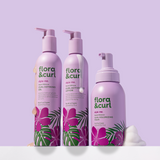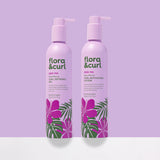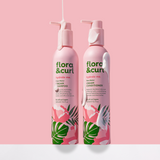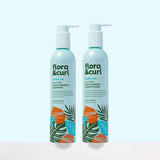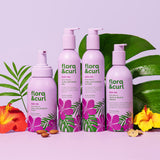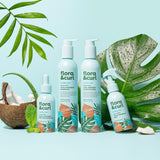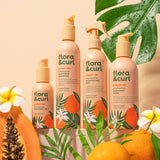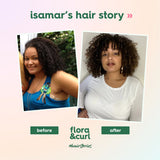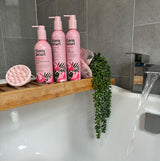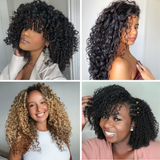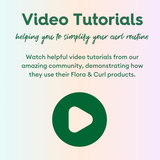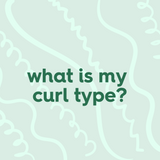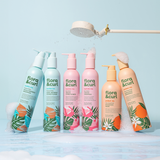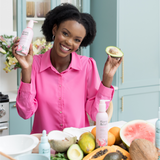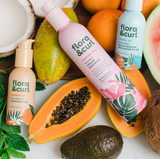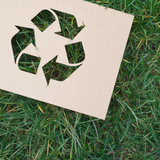

What is hair porosity? Why is it important and what products will work for your hair depending on its porosity? These are just some of the questions fellow curlies tend to ask while figuring out the porosity game.
Hair porosity refers to how the cuticle lies along the hair shaft and how your hair can retain water. This can dictate how well products work on your hair. There are three types of porosity levels.
Normal porosity
Normal Porosity means your hair is balanced. You don't seem to notice any problems and your hair seems to be loving what you're doing.
Low porosity
Low Porosity is also known as protein sensitive hair. This means your hair cuticles are tightly closed. This means that it is hard for moisture to be received.
- Products normally sit on the hair causing a lot of product build-up.
- Your hair will normally take a while to get fully wet
- You may notice little water beads on your hair while washing. This shows how hard water is working to get into your hair cuticles
- Your hair may also take a long time to dry
- Using thick products may make your hair feel greasy
High porosity
Having High Porosity hair means your hair cuticles are fully open and can absorb moisture easily but it does not retain moisture very well. So easy in, easy out! This porosity type loves protein.
- Hair cuticles are normally damaged or hair has been chemically processed, hence why they are fully open
- Your hair may tangle easily because all the cuticles are getting caught on to each other
- Your hair tends to dry extremely fast
- Your hair is prone to excessive frizz
- Products such as lotions may not work as well as heavier products
It can get confusing as sometimes you can find yourself in-between all porosities, so there are a few tests that you can try.
The cup test
Take a cup of water and a clean piece of hair and place it into the water for 2-4 minutes. The results will show what porosity type you have:
Low porosity > the hair floats to the top of the water
Normal porosity > the hair floats in the middle of the water
High porosity > the hair has sunk to the bottom of the water-filled glass
The spray test
Try spraying your hair with warm water. If you notice beads of water sitting on your hair, then you have low porosity hair. The moisture is just sitting there and not being let in. If you spray your hair and the water instantly absorbs, then you have high porosity hair as your cuticles are open.
Low porosity tips
- Use heat when deep conditioning. This will help open your cuticles
- Washing your hair with warm/hot water will also help open up the cuticles
- Try heating your deep conditioner before applying it to your hair after shampooing
- Use lighter products like Argan, Sweet Almond and Grapeseed oils that work best for low porosity hair. Lotions are lightweight too.
- An Apple Cider Vinegar rinse every so often will help cleanse the scalp and get rid of any product build-up
- Apply products to damp (not extremely wet) hair
High porosity tips
- Keep your hair soaking wet when applying hair products like conditioners
- Layering products is an effective way of keeping the moisture in. For example, using a leave-in, butter/cream and oil (the LOC method) will give your hair the moisture that it needs. Each hair type/density is different, so if all three is a little too much, then try two.
- Air drying should work best as high porosity hair tends to dry quickly
- Rinsing your hair with cold water while in the shower will close your cuticles and keep the moisture in a little longer, especially after deep conditioning
- Heavier products work best for high porosity hair. Products like butters and creams, and oils like Coconut, Jojoba and Aloe Vera Gel work well
It's all about trial and error when it comes to figuring out what your hair likes and doesn't like.
Naturally yours,Team Flora & Curl
Continue Reading
-
Nov 12th 2025This National Healthy Skin Month, we are highlighting the importance of scalp care and the foundation for healthy curls.
-
Oct 31st 2025
Moisture for Your Curls: How to Keep Your Hair Hydrated & Moisturised
Thirsty curls? Let’s fix that. Here’s your guide to keeping every strand hydrated, healthy, and happy. -
Oct 24th 2025
Protein for Your Curls: Why Protein Matters
Discover why protein matters, and how it strengthens weak curls, exploring Flora & Curl’s Strengthen Me range to repair, protect, and restore y... -
Oct 22nd 2025
Protein vs Moisture: How to Find the Right Balance for Healthy Curls
What is the difference between protein and moisture within your hair care routine? Learn how to tell what your curls need to stay strong, soft, and... -
Sep 25th 2025
Strengthen Me: The Era of Stronger Curls Has Arrived
After three years in the making, it’s finally here! We are proud to announce the launch of our most anticipated collection yet: the Strengthen Me r... -
Apr 13th 2025
How To Enjoy Time At Home During Social Distancing
We understand that periods of uncertainty and information overload can make many people feel uneasy and out of a routine. We’ve rounded up a few wa...

